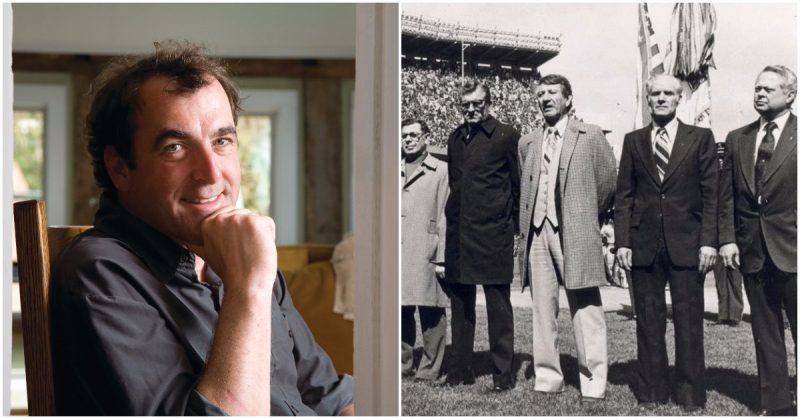War History Online presents this Guest Article by Alex Kershaw
He was the last living member who fought in WWII’s most decorated US platoon which faced the spearhead of Hitler’s last desperate gamble in the Ardennes in December 1944 – the Battle of the Bulge. Louis Kalil was the last living survivor who fought that day. He passed away last week, I learned today, aged 94. It was a miracle that he survived the war to live so long, to be happily married for 63 years.
I’ve grown accustomed, sadly, to veterans I’ve known well dying almost every week in the last few years – they cannot defy age when they enter their nineties. Every day is a blessing. In fact, Kalil’s platoon leader died only this past December, leaving only Louis still breathing from eighteen men who had fought shoulder to shoulder together. Some you mourn more than others and Louis was among the most self-effacing and inspirational of them all, stoic, modest, as tough as they come.
I went back to my archives and found crackling and hissing tape recordings from 2003 when I interviewed him and ten of his fellow warriors who were still alive. They belonged to an intelligence and reconnaissance platoon in the 99th Division, and had fought to the last bullet on 16 December 1944, carrying out orders to hold their positions above a small village called Lanzareth, and in so doing had changed the outcome of the last great battle Americans fought in Europe.
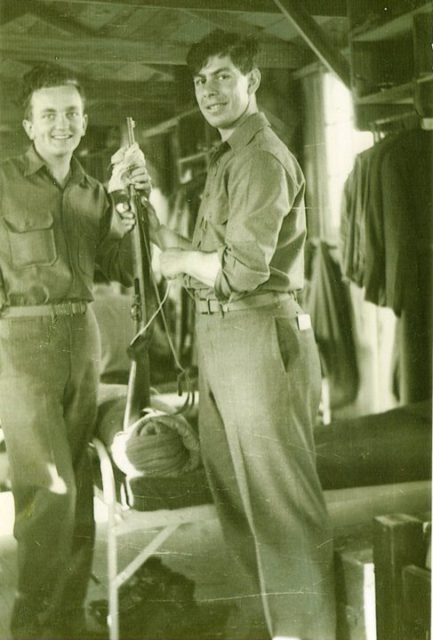
I played the tapes again. Louis was calm and laconic as he told me his story. I found it just as moving as when I first heard it in his living room in a snowbound Indiana back in 2003.
Here are a few highlights…
It was around 11 am on 16 December, three hours after first being attacked, when 22-year-old Private Louis Kalil noticed that German paratroopers were trying to infiltrate through woods to either side of his dugout. A few feet from Kalil, Sergeant George Redmond was squinting through the sights of his M-1. To the left of their dugout, a German paratrooper crawled along the rock-hard ground. He got to within thirty yards of Kalil and Redmond and then quickly aimed his rifle, loaded with a grenade, and fired. It was a superb shot. The grenade entered the dugout through its eighteen-inch slit and hit Kalil square in the jaw. But it did not explode. Instead, it knocked Kalil across the dugout to Redmond’s side.
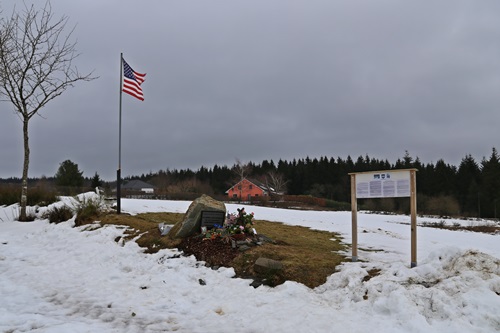
Kalil was half-stunned as he lay sprawled on the base of the dugout. Redmond dropped his rifle, grabbed some snow, and rubbed it in Kalil’s face. Blood gushed from Kalil’s jaw. The force of the impact had forced his lower teeth into the roof of his mouth, where several were now deeply embedded. His jaw was fractured in three places. Redmond sprinkled sulfa powder on the wound and then pulled gauze out of both their first aid kits and started to wrap Kalil’s face.
There was no morphine in the kits to kill the pain. Once the shock wore off, Kalil would be in agony.
“How bad is it?” asked Kalil.
“Oh, it’s not too bad, Louis,” said Redmond.
“But I’ve got blood all over myself. It can’t be very nice.”
“It ain’t too bad.”
“Okay, I’ll take your word for it.”
Kalil knew Redmond was trying to make the wound sound a lot less severe than it really was. He could feel the teeth embedded in the roof of his mouth cutting into his tongue.
The battle still raged. Small-arms fire sounded like radio static during an electrical storm, a constant ear-piercing crackle. Redmond’s fingers did not shake despite his fear as he wrapped the last of the gauze around Kalil’s jaw. He knew the Germans could penetrate their position any moment. If they were to stand a chance, they would need to return to firing as soon as possible. Redmond tied the last gauze bandage and met Kalil’s gaze.
“Don’t worry about it,” reassured Redmond.
“If things get to where you can take off, then take off,” Kalil replied.
Redmond looked at Kalil fiercely.
“We’re staying here— together.”
“All right.”
Redmond grabbed his M-1 and began to fire. Kalil was now in terrible pain but did the same, aiming with the use of just one eye at the figures that still approached up the bloodied hillside. It was so cold in the dugout that Kalil could feel blood freezing to his face, stemming the flow from the wound. The damned cold had been good for one thing at least. In the desert, he would surely have bled to death….
I listened to other tapes. Louis Kalil, to his dying day a devout Catholic, told me how he was finally captured, separated from the rest of his platoon, which hurt more than his wound, and placed on a hospital train on 17 December 1944. The train headed east, toward the Ruhr Valley. His fellow travelers were not fortunate GIs but grievously wounded Germans. Kalil was not attended to by medics or doctors inside a carriage. Instead, even though his face wound was life-threatening, he was placed between carriages, out in the open, where he quickly felt as if he was going to freeze to death. He had not been given painkillers. As the hours passed and bitter gusts and snow squalls buffeted the train, he became convinced that only God could save him now.
From his blood-stained combat jacket, Kalil pulled out his standard issue pocket Bible and flipped through the pages until he reached Psalm 23.
Blood dripped onto a page as Kalil prayed and then read the psalm out loud so that he could hear the comforting words: “The Lord is my shepherd, I shall not want . . .”
Kalil read the psalm over and over. It was his only anesthetic. And it worked: he found the strength to keep going through that night’s fourteen hours of darkness and the next morning was able to ask one of his captors for a blanket. “They eventually gave me one,” he recalled. “But I still had no food and no water. I began to get fevers— the bandage from December 16 had frozen onto my face. I hadn’t had it changed. The Germans finally got an interpreter and a German doctor told me I’d gotten gangrene in the wound.”
Kalil knew the Germans would probably not shoot him now. Perhaps they hoped he’d jump off the train and kill himself when the agony of his wounds got to be too much. Another thought obsessed him: How would his parents cope with the inevitable telegram announcing that he was missing in action?
Guards passed where he lay. One kicked him viciously as if he was a lame dog that should have been put down rather than brought along to block the passageways. “After a day or two it was so damn cold I was shivering all the time,” Kalil recalled. “The Germans just kept kicking me. There was nothing I could do. But the worst thing was the teeth embedded in the roof of my mouth. I just couldn’t get them out. Finally, they fell out. Then I felt a little relief.”
Louis Kalil spent the longest winter of his life in various POW camps and hospitals. He was liberated by the British on 16 April 1945 and returned to the US in the late summer. He did not want his family to see his badly disfigured face and opted to have surgery before returning home.
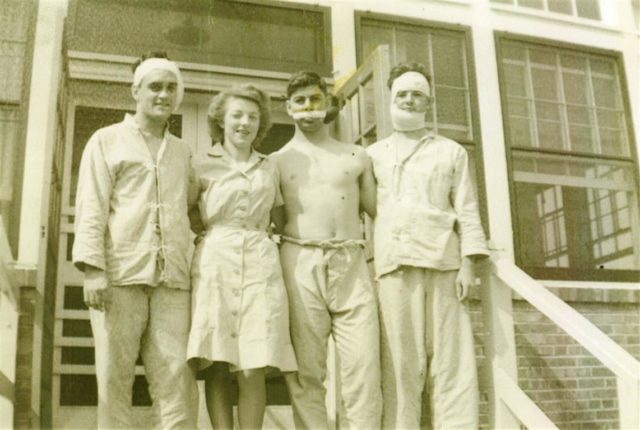
After six operations to repair his face, twenty-three-year-old Louis Kalil left the hospital in early 1946 a profoundly changed man. He would take one day at a time and play things safe; he felt he had been blessed to make it home when so many others had not. Like every other returning member of his platoon, all of whom miraculously survived the war, Kalil had a newfound appreciation for family and was determined to spend as much time with his loved ones as possible. When Kalil finally returned to Mishawaka, Indiana, he found his father waiting for him on the front stoop.
“We didn’t know if we were going to have you any more or not,” said Kalil’s father, a look of immense joy and relief on his face. His father dropped to his knees and kissed the ground…
Louis Kalil became emotional for the first time when he told me in 2003 about his homecoming. I listened to the tape again this morning and could hear his voice drop and the painful pause after he told me about his father kissing the ground. I remember looking out of the window into his neat garden. Louis had smiled and had then carried on, just as he had that fateful winter of 1944-45.
“It ain’t too bad.”
That’s what his best buddy in a foxhole had told him. That’s what so many of us forget today – how good things are, how much worse they could be, so lost have we become in our quest just to be comfortable, just to consume – the whole point surely of our over-cosseted, mostly self-absorbed lives?
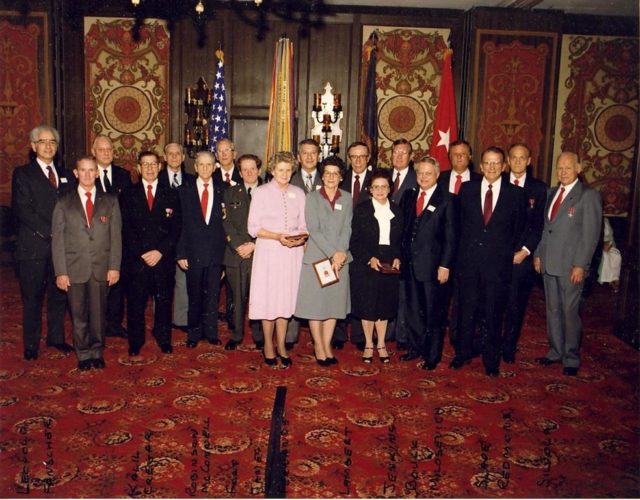
We should all be grateful, for the rest of our days on this overheating globe, that men like Louis Kalil sucked up what life threw at them, carried on, and gave us Europeans the lives we’ve taken so for granted because of him and his kind: quiet warriors who put their lives on the line to liberate others, defeat fascism, end genocide and restore democracy and decency to a continent that has been at peace ever since the end of a war that killed 19 million civilians in Europe alone.
Go gentle into that good night, Louis.
None of us have the right to ever forget men like you.
Author: Alex Kershaw
All photos provided by the author.
